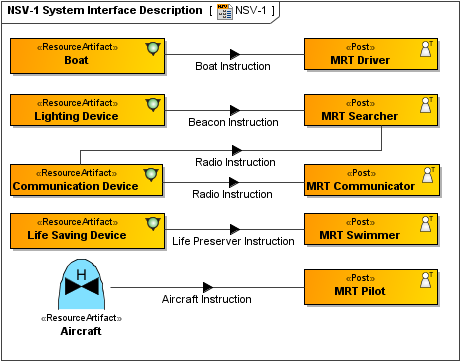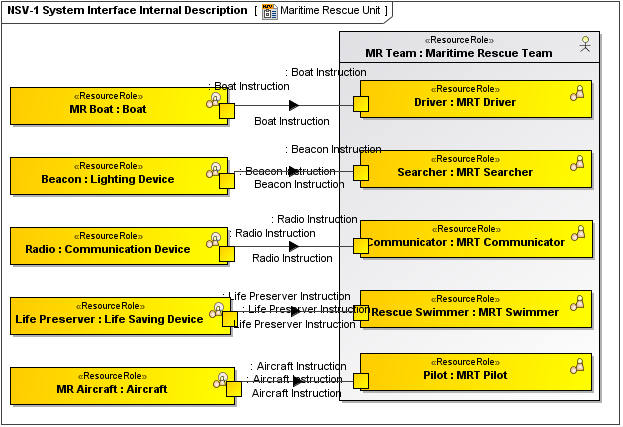Description
System interface description (NSV-1) addresses the composition and interaction of resources. For NMM, NSV-1 incorporates the human elements Posts, Organizations, and Roles.
A resource interaction is a simplified representation of a pathway or network, usually depicted graphically as a connector (for example, a line with possible amplifying information).
In addition, the Capability Configuration concept is used as a wrapper to bring together resources to satisfy a Capability.
Implementation
NSV-1 can be represented using:
- NSV-1 diagram which is based on the UML Class diagram.
- NSV-1 diagram which is based on the UML Composite Structure diagram.
- UML Class diagram.
- UML Composite Structure diagram.
- SysML Block Definition diagram.
- SysML Internal Block diagram.
Sample
NSV-1 System Interface Description
NSV-1 System Interface Internal Description
Related views
An NSV-1 can optionally be adorned with nodes originally specified in an NOV-2. In this way, traceability can be established from the logical NOV structure to the physical NSV structure.
An interaction, as depicted in the NSV-1, is an indicator that information passes from one resource to another. In the case of systems, this can be expanded into further detail in an NSV-2. Resource Interactions are summarized in a Resource Interactions Matrix (NSV-3).
The functions performed by the resources are specified in an NSV-4 Resource Functionality Description, but may optionally be overlaid on the Resources in the NSV-1.
An Operational View (NOV) suite may specify a set of requirements – either as a specific operational plan, or a scenario for procurement. As NOV-2 and NOV-5 specify the logical structure and behavior, NSV-1 and NSV-4 specify the physical structure and behavior (to the level of detail required by the architectural stakeholders).

